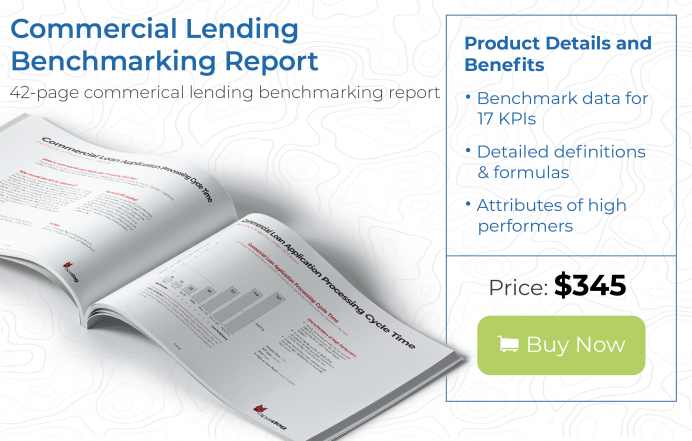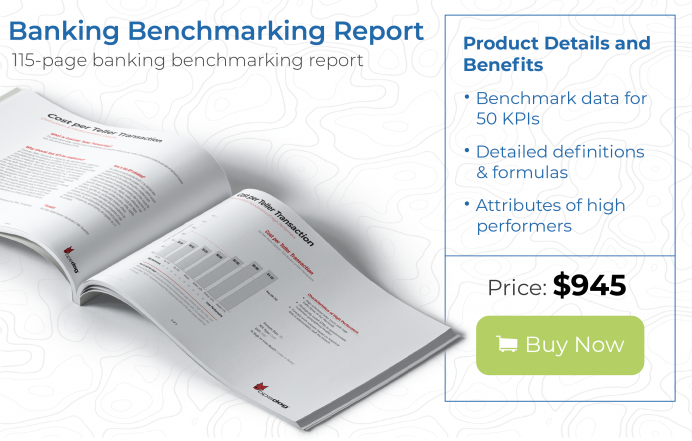For many banks, commercial lending is the backbone of their lending portfolios. But since commercial loans can be complex and for large dollar amounts, these loans require specialized underwriting and a high degree of monitoring to make sure they are not at risk of default. Commercial loan key performance indicators alert the bank to any potential issues that can make these loans more risky and less profitable.
What are Commercial Loans?
While consumer loans are for personal items such as a home, car, or boat, commercial loans are loans made to businesses, corporations, or individuals for capital expenditures like new equipment or real estate, or to cover operational costs such as payroll. Many financial institutions offer both consumer and commercial lending, but these departments are typically organized in separate business units with separate profit and loss (P&L) statements.
What are Commercial Loan KPIs?
Commercial lending profitability depends on several factors. First, banks need to close and fund loans as efficiently as possible to reduce loan costs. Second, they need to make loans in accordance with their credit policies to minimize risk exposure. And third, they need to monitor collections.
Commercial loan key performance indicators (KPIs) measure and evaluate the profitability of a bank’s commercial lending business by monitoring metrics such as how long it takes to close a loan, how many loans are overdue and therefore at risk of default, and the dollar amount of loans that the bank is forced to write-off.
The Benefits of Using KPIs in Commercial Lending
Commercial lending KPIs can highlight areas in which banks can improve their lending processes, workflows, credit policies, or employee training. For instance, monitoring loan origination cycle time lets you know if you are meeting customer expectations for timeliness. You can then dive in to see where you can streamline the process, such as refining the actual loan application forms or creating a document checklist for loan officers.
If your loan charge-off rate is rising, you can monitor the types of loans that are overdue and review the underwriting guidelines and credit and lending policies for those types. Or, you may need to focus your collections efforts on those loans most likely to pay. You can also consider restructuring some loans with new terms or collateral.
A higher than average cost to originate commercial loans could indicate several issues. Do you have too many staff? Do you need to double-down on training loan officers and underwriters? Should you make sure that higher salaried commercial lenders are focusing on business development and relationship management rather than administrative tasks that could be done by support staff?
Commercial Loan KPI Examples
Commercial loan KPIs serve as an early warning signal that there are internal issues such as too much back and forth between underwriters and borrowers due to missing documentation, or that there are external issues such as macroeconomic factors that foretell of a higher than average loan default rate. Here are five often-used commercial lending KPIs:
Loan Performance Indicator #1: Commercial Loan Origination Cycle Time
While more complex commercial loans can take longer to underwrite, close, and fund, the average number of days it takes from application to close and funding is an indicator of how efficient and productive a commercial loan department is. Since longer origination cycle times mean more cost for the department and more frustration for the borrower, keeping cycle times short without impacting loan quality helps banks compete against other lenders.
To calculate, divide the number of calendar days required to close and fund commercial loans by the total number of commercial loan applications received. If the loan closed and was funded on different days, use the date that is later.
Loan Performance Indicator #2: Commercial Loan Charge-Off Rate
A high loan charge-off rate can take a significant bite out of commercial lending profitability. Perhaps there are too many high-risk loans in the portfolio or underwriting guidelines are being bent or the bank needs to revisit its risk tolerance. If the losses from uncollected commercial loans are high enough, the bank may have to dip into loss reserves.
Divide the dollar amount of the remaining balance of loans that are unlikely to be collected by the average dollar amount of total loans outstanding, as a percentage, to calculate commercial loan charge-off rate.
Loan Performance Indicator #3: Commercial Loan Recovery Rate
The commercial loan recovery rate is an indicator of the financial institution’s credit risk. A low rate of recovery means that the bank is not likely to get repaid. By monitoring the recovery rate, a bank can gauge both the health of its commercial lending portfolio as well as get a heads-up on troubling macroeconomic factors that could impact loan defaults.
To calculate, divide the total dollar amount of commercial loan balances that have not been paid in 90 days by the total allowances for commercial credit losses at the end of a single year, as a percentage. Do not include potential interest earned in the total allowance.
Loan Performance Indicator #4: Cost per Commercial Loan Origination
A high cost to originate commercial loans could indicate a less-than efficient application and underwriting process, untrained or inexperienced commercial lenders, or staffing costs that are too high. This metric factors in all costs for commercial loan origination, including salary, benefits, and bonuses for staff and overhead costs including technology, office space, and vendor fees.
To determine cost per loan, divide the total cost of originating and fulfilling commercial loans by the number of loans closed and funded.
Loan Performance Indicator #5: Percentage of Commercial Loans 90+ Days Past Due
It’s a very real risk that borrowers will not pay off commercial loans that are more than 90 days past due. The sooner the financial institutions takes steps to encourage the borrower make good on the loan–perhaps by lengthening the loan terms or requiring additional collateral to back the loan–the better the chances for recovery.
To calculate, divide the dollar amount of commercial loans that are 90+ days past due and still accruing interest by the total dollar amount of outstanding commercial loans in the portfolio, as a percentage.
Final Thoughts
Commercial lending can be profitable for banks—but they need to be diligent in monitoring KPIs to ensure that they are efficiently onboarding complex loans, that these loans continue to perform, and that they are processing and managing these loans as efficiently as possible.
For a full list of commercial lending benchmarks, download our Commercial Lending Benchmarking Report here.
If you need more help in developing an inventory of metrics for your commercial loan officers contact us for more information on our Benchmarking Research and business intelligence implementation services. We will help you benchmark your finance and payroll departments and provide you with presentation-ready, high-quality deliverables at an affordable price.



